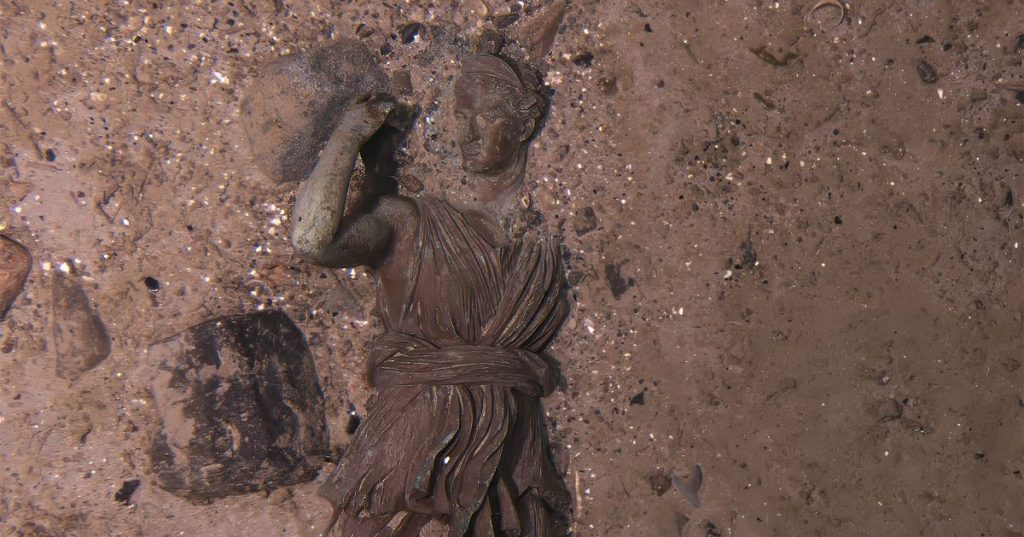During a recent expedition to the wreck site of the Titanic in the North Atlantic Ocean, RMS Titanic Inc. made significant discoveries, including a bronze statue called “Diana of Versaille” that had not been seen in decades. The company, which holds salvage rights to the wreck, completed their first trip to the site since 2010 and released images from the expedition. The images show that the site continues to change over a century after the ship sank. This expedition occurred amidst an investigation by the U.S. Coast Guard into the 2023 implosion of the Titan submersible, which resulted in the deaths of all five people on board, including Paul-Henri Nargeolet, the director of underwater research for RMS Titanic.
In addition to the rediscovery of the “Diana of Versaille” statue, the expedition uncovered both preservation and loss at the site. A significant section of the ship’s railing surrounding the bow’s forecastle deck has fallen since the last expedition, signaling ongoing decay at the site. The company expressed mixed emotions about the findings, with excitement over the rediscovery of the statue contrasting with sadness over the deteriorating condition of the ship. Tomasina Ray, the director of collections for RMS Titanic, stated that the loss of the iconic bow railing has reinforced the company’s commitment to preserving the legacy of the Titanic.
The expedition team spent 20 days at the site capturing over 2 million high-resolution images of the wreckage. They fully mapped the wreck and its debris field using advanced equipment to enhance understanding of the site. The next step for the company is to process the data collected during the expedition and share it with the scientific community. This will enable the identification of historically significant artifacts at risk of further decay for safe recovery in future expeditions. The company emphasized the importance of preserving the legacy of the Titanic and ensuring the protection of important artifacts for future generations.
The mission of the expedition was considered especially important in the wake of the death of Paul-Henri Nargeolet, who played a crucial role in underwater research for RMS Titanic. A wrongful death lawsuit was filed by Nargeolet’s family against OceanGate, the operator of the Titan submersible that imploded in June 2023. The company has not publicly commented on the lawsuit, which was filed in a Washington state court. The U.S. Coast Guard’s investigation into the implosion of the Titan submersible will be the subject of a public hearing scheduled for later in September. The tragic incident adds a somber context to the recent expedition to the Titanic wreck site, highlighting the risks and challenges of deep-sea exploration and salvage operations.
Overall, the recent expedition to the Titanic wreck site revealed a mix of preservation and loss, showcasing the ongoing changes and decay at the site over a century after the ship sank. The rediscovery of the “Diana of Versaille” statue, along with the deterioration of the ship’s railing, emphasized the importance of preserving the legacy of the Titanic. The extensive data collected during the expedition will help inform future expeditions and enhance understanding of the wreck site. Despite the challenges and risks involved in deep-sea exploration, the mission of preserving historically significant artifacts from the Titanic remains a top priority for RMS Titanic Inc. as they continue their work to protect and honor the memory of the ill-fated ship and its passengers.








